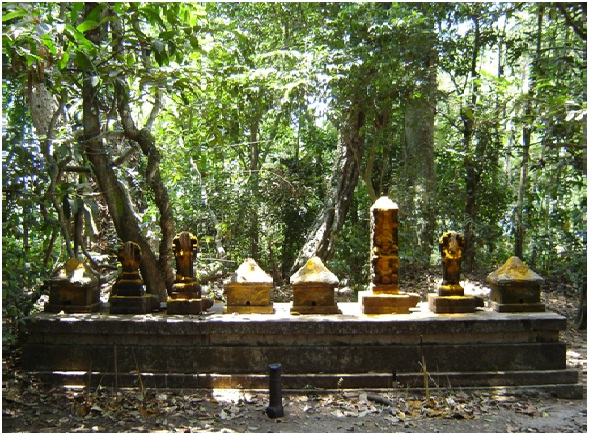Context:
The protection of sacred groves is a part of the Community Reserve done by state governments.
Kadalundi–Vallikkunnu Community Reserve
- The government of Kerala, to protect its Kadalundi-Vallikkunnu community reserve during the last three years, has sought funds from the centrally sponsored scheme of “Development of Wildlife Habitat.”
Kadalundi-Vallikkunnu Community Reserve
- India’s first river-front community reserve.
- Located on the western side of Northern Kerala in Kozhikode and Malappuram districts.
- It lies on the river mouth of the Kadalundi River.
- The community reserve inhabits green mangrove patches and wetlands.
|
What Is a Community Reserve?
- Any government or private land can be designated as a community reserve by the state government after the amendment of the Wildlife Protection Act in 2003.
- They are made to preserve biodiversity with the help of the local population.
- In India, there are around 220 active community reserves. A community reserve management committee manages them.
|
What Are Sacred Groves?

- Sacred Groves are small patches of trees traditionally protected by the local community for religious and cultural significance.
- They are also important for protecting local biodiversity. They also serve as sanctuaries for both nature and spirituality.
Sacred Groves In India
- Sacred groves are scattered all over India. Still, they are found primarily within forested areas such as the Western Ghats, the Himalayas, and the northeastern and central hill tracts.
- Shelters: These refugia shelter numerous species of trees, lianas, medicinal plants, animals, birds, lizards, snakes, frogs, and other creatures that have become rare elsewhere in the landscape.
Significance of Sacred Groves
Different Names for Sacred Groves
- Sarna in Bihar
- Dev Van in Himachal Pradesh
- Devarakadu in Karnataka
- Kavu in Kerala
- Dev in Madhya Pradesh
- Devarahati or Devarai in Maharashtra
- Lai Umang in Manipur
- Law Kyntang or Asong Khosi in Meghalaya
- Oran in Rajasthan
- Kovil Kadu or Sarpa Kavu in Tamil Nadu
|
- Mitigating Natural Disasters: Sacred groves act as natural windbreaks, shielding nearby settlements and agricultural lands from strong winds and reducing damage, hurricanes, or storms.
- Biodiversity Conservation: They contain a high level of biodiversity because they are protected from human interference. This makes them important for rare and endangered species seeking habitats.
- Religious Significance: They are dedicated to a particular deity or spirit. They are seen as the dwelling place of such beings, and also as a place where humans can connect with the divine.
- Cultural Significance: Integral to local traditions and beliefs, sacred groves enrich cultural heritage through rituals, stories, and connections to ancestral wisdom, fostering community identity and pride.
Conclusion
Sacred groves in India are being gradually altered due to ever-expanding human populations, pollution and removal of biomass; effective conservation is the need of the hour to maintain their functional values.
Also Read: Protected Areas In India
News Source: Scientific American and PIB
![]() 9 Feb 2024
9 Feb 2024

